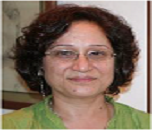Theme: From roots till eradication of Cancer : An overview
Anti-Cancer Therapy 2016
Radiation Oncology
Radiation oncology is a medical specialty that involves treating cancer with radiation. Doctors who specialize in treating cancer with radiation (radiation oncologists) use radiation therapy to treat a wide variety of cancers. Radiation therapy uses carefully targeted and regulated doses of high-energy radiation to kill cancer cells. Radiation causes some cancer cells to die immediately after treatment, but most die because the radiation damages the chromosomes and DNA so that the cells can no longer divide and the tumor can't grow.
Related Radiation Oncology Conferences | Oncology Conferences | Radiology and Oncology Conferences | Oncology Events | Oncology Meetings |
International Conference on Nuclear Medicine and Radiation Therapy , July 14-15, 2016,Germany; International Conference on Medical Imaging and Diagnosis Conference, May 09-10, USA; 2nd International Conference on Medical Physics and Biophysics , November 03-05, 2016, Turkey; International Conference on Radiography , November 17-18, 2016,UAE; 5th International Conference on Radiology and Imaging , September 19-20, 2016, USA; Breast Cancer Conference, Dec 08-12, 2015, USA; 57th Radiology and Oncology Conference ,Oct 31-Nov 07, 2015, USA; Radiation Therapy Conference, Oct 18-20, 2015, USA; 33rd Oncology Conference, Oct 21-23, 2015 , Mexico; UAE Cancer Congress, Oct 29-31, 2015, UAE.
Radiation Oncology & Clinical Trails
Some clinical studies try to determine if a therapeutic approach is safe and potentially effective. Many large clinical trials compare the more commonly used treatment with a treatment that cancer experts think might be better. Patients who participate in clinical trials help doctors and future cancer patients find out whether a promising treatment is safe and effective. All patients who participate in clinical trials are carefully monitored to make sure they are getting quality care. It is important to remember that clinical trials are completely voluntary. Patients can leave a trial at any time. Clinical trials testing new treatments are carried out in phases:
Phase I - Is the Treatment Safe?
Phase II - Does the Treatment Work?
Phase III - Is the Treatment Better?
Phase IV - Are There Better Ways to Use the Treatment?
Related Radiation Oncology Conferences | Oncology Conferences | Radiology and Oncology Conferences | Oncology Events | Oncology Meetings |
International Conference on Nuclear Medicine and Radiation Therapy , July 14-15, 2016,Germany; International Conference on Medical Imaging and Diagnosis Conference, May 09-10, USA; 2nd International Conference on Medical Physics and Biophysics , November 03-05, 2016, Turkey; International Conference on Radiography , November 17-18, 2016,UAE; 5th International Conference on Radiology and Imaging , September 19-20, 2016, USA; 1st International Nastaran Cancer Symposium, Oct 01,2015, Iran. 15th International Conference on Progress in Vaccination against Cancer, Oct 06-08, 2015, Germany. 47th Congress Of International Society Of Pediatric Oncology, Oct 08-11, 2015, South Africa; Radiation Therapy Conference, Oct 18-20, 2015, USA; 33rd Oncology Conference, Oct 21-23, 2015 , Mexico; UAE Cancer Congress, Oct 29-31, 2015, UAE.
Radiology & Medical Imaging
Radiology is the specialization in diagnosing and treating diseases and injuries using medical imaging techniques, such as x-rays, computed tomography (CT), magnetic resonance imaging (MRI), nuclear medicine, positron emission tomography (PET) and ultrasound, while Medical imaging is the technique and process of creating visual representations of the interior of a body for clinical analysis and medical intervention, as well as visual representation of the function of some organs or tissues.
Related Radiation Oncology Conferences | Oncology Conferences | Radiology and Oncology Conferences | Oncology Events | Oncology Meetings |
International Conference on Nuclear Medicine and Radiation Therapy , July 14-15, 2016,Germany; International Conference on Medical Imaging and Diagnosis Conference, May 09-10, USA; 2nd International Conference on Medical Physics and Biophysics , November 03-05, 2016, Turkey; International Conference on Radiography , November 17-18, 2016,UAE; 5th International Conference on Radiology and Imaging , September 19-20, 2016, USA; Breast Cancer Conference, Dec 08-12, 2015, USA; 57th Radiology and Oncology Conference ,Oct 31-Nov 07, 2015, USA; Radiation Therapy Conference, Oct 18-20, 2015, USA; 33rd Oncology Conference, Oct 21-23, 2015 , Mexico; UAE Cancer Congress, Oct 29-31, 2015, UAE.
Nuclear Medicine
Physicians use radionuclide imaging procedures to visualize the structure and function of an organ, tissue, bone or system within the body. Nuclear imaging has two roles: diagnostic and prognostic, indicating that these methods are an essential component in the evaluation of diseases. Newer methods rely on positron emission tomography, allows the generation of images with higher resolution and absolute quantitation of biological processes such as transport activities, enzyme activities or angiotensin receptors. This track will focus on diseases like Non-cancerous diseases, Various Cancers, Congenital diseases, Autoimmune Diseases, Heart diseases, Brain disorders, Kidney diseases and Thyroid disorders
Related Radiation Oncology Conferences | Oncology Conferences | Radiology and Oncology Conferences | Oncology Events | Oncology Meetings |
International Conference on Nuclear Medicine and Radiation Therapy , July 14-15, 2016,Germany; International Conference on Medical Imaging and Diagnosis Conference, May 09-10, USA; 2nd International Conference on Medical Physics and Biophysics , November 03-05, 2016, Turkey; International Conference on Radiography , November 17-18, 2016,UAE; 5th International Conference on Radiology and Imaging , September 19-20, 2016, USA; Breast Cancer Conference, Dec 08-12, 2015, USA; 57th Radiology and Oncology Conference ,Oct 31-Nov 07, 2015, USA; Radiation Therapy Conference, Oct 18-20, 2015, USA; 33rd Oncology Conference, Oct 21-23, 2015 , Mexico; UAE Cancer Congress, Oct 29-31, 2015, UAE.
Types of Therapies
Radiation therapy kills cancer cells by damaging their DNA (the molecules inside cells that carry genetic information and pass it from one generation to the next). Radiation therapy can either damage DNA directly or create charged particles (free radicals) within the cells that can in turn damage the DNA. Cancer cells whose DNA is damaged beyond repair stop dividing or die. When the damaged cells die, they are broken down and eliminated by the body’s natural processes. However it can damage normal cells also. The amount of radiation that normal tissue can safely receive is known for all parts of the body. Doctors use this information to help them decide where to aim radiation during treatment.
Related Radiation Oncology Conferences | Oncology Conferences | Radiology and Oncology Conferences | Oncology Events | Oncology Meetings |
International Conference on Medical Imaging and Diagnosis Conference, May 09-10, USA; 2nd International Conference on Medical Physics and Biophysics , November 03-05, 2016, Turkey; International Conference on Radiography , November 17-18, 2016,UAE; 5th International Conference on Radiology and Imaging , September 19-20, 2016, USA; Stereotactic Ablative Radiotherapy Conference, Nov 10-20, 2015, UK; Radiation Therapy Error Conference, Oct 23, 2015, UK; Nuclear Science Symposium and Medical Imaging Conference, Oct 31-Nov 07, 2015, USA; Brachytherapy Conference, Nov 16-20, 2015, Italy; Radiation Therapy Conference, Oct 18-20, 2015, USA; 57th Radiology and Oncology Conference ,Oct 31-Nov 07, 2015, USA; Breast MR Imaging Conference, Oct 20-24, 2015, USA; Breast Oncology Conference, Nov 05-07, 2015, USA.
Palliative Radiation Therapy
Palliative radiation therapy is radiation therapy that is used to lessen bone pain when prostate cancer has spread to the bones. Palliative radiation therapy is usually given by external beam radiation. Radiation beams from an x-ray machine are carefully focused on the areas of bones that have the cancer. It may take 2 to 3 radiation treatments for your bone pain to be less. There can be side effects with palliative radiation therapy. Some side effects depend on what part of your body is getting the radiation. The common side effects that you may have are: skin irritation where the radiation beam is placed, fatigue or tiredness, diarrhea, not having an appetite (not feeling like eating).
Related Radiation Oncology Conferences | Oncology Conferences | Radiology and Oncology Conferences | Oncology Events | Oncology Meetings |
International Conference on Nuclear Medicine and Radiation Therapy , July 14-15, 2016,Germany; International Conference on Medical Imaging and Diagnosis Conference, May 09-10, USA; 2nd International Conference on Medical Physics and Biophysics , November 03-05, 2016, Turkey; International Conference on Radiography , November 17-18, 2016,UAE; 5th International Conference on Radiology and Imaging , September 19-20, 2016, USA; Stereotactic Ablative Radiotherapy Conference, Nov 10-20, 2015, UK; Radiation Therapy Error Conference, Oct 23, 2015, UK; Nuclear Science Symposium and Medical Imaging Conference, Oct 31-Nov 07, 2015, USA; Brachytherapy Conference, Nov 16-20, 2015, Italy; Radiation Therapy Conference, Oct 18-20, 2015, USA; 57th Radiology and Oncology Conference ,Oct 31-Nov 07, 2015, USA; Breast MR Imaging Conference, Oct 20-24, 2015, USA; Breast Oncology Conference, Nov 05-07, 2015, USA.
Radiobiology & Cancer Imaging
Radiobiology is the field of clinical and basic medical sciences that involves the study of the action of ionizing radiation on living things. Ionizing radiation is generally harmful and potentially lethal to living things but can have health benefits in radiation therapy for the treatment of cancer and thyrotoxicosis. Its most common impact is the induction of cancer with a latent period of years or decades after exposure. High doses can cause visually dramatic radiation burns, and/or rapid fatality through acute radiation syndrome. Controlled doses are used for medical imaging and radiotherapy. Some scientists suspect that low doses may have a mild hormetic effect that can improve health
Related Radiation Oncology Conferences | Oncology Conferences | Radiology and Oncology Conferences | Oncology Events | Oncology Meetings |
International Conference on Nuclear Medicine and Radiation Therapy , July 14-15, 2016,Germany; International Conference on Medical Imaging and Diagnosis Conference, May 09-10, USA; 2nd International Conference on Medical Physics and Biophysics , November 03-05, 2016, Turkey; International Conference on Radiography , November 17-18, 2016,UAE; 5th International Conference on Radiology and Imaging , September 19-20, 2016, USA; Stereotactic Ablative Radiotherapy Conference, Nov 10-20, 2015, UK; Radiation Therapy Error Conference, Oct 23, 2015, UK; Nuclear Science Symposium and Medical Imaging Conference, Oct 31-Nov 07, 2015, USA; Brachytherapy Conference, Nov 16-20, 2015, Italy; Radiation Therapy Conference, Oct 18-20, 2015, USA; 57th Radiology and Oncology Conference ,Oct 31-Nov 07, 2015, USA; Breast MR Imaging Conference, Oct 20-24, 2015, USA; Breast Oncology Conference, Nov 05-07, 2015, USA.
Radiography
Radiography is an imaging technique which uses electromagnetic radiation other than visible light, to view the internal structure of a non-uniformly composed and opaque object (i.e. a non-transparent object of varying density and composition) such as the human body. To create the image, a heterogeneous beam of X-rays is produced by an X-ray generator and is projected toward the object. A certain amount of X-ray is absorbed by the object, which is dependent on the particular density and composition of that object. The X-rays that pass through the object are captured behind the object by a detector (either photographic film or a digital detector). The detector can then provide a superimposed 2D representation of all the object's internal structures. Contrast radiography uses a radio contrast agent, a type of contrast medium, to make the structures of interest stand out visually from their background, whereas plain radiography does not. Each type is best suited to certain indications.
Related Radiation Oncology Conferences | Oncology Conferences | Radiology and Oncology Conferences | Oncology Events | Oncology Meetings |
International Conference on Nuclear Medicine and Radiation Therapy , July 14-15, 2016,Germany; International Conference on Medical Imaging and Diagnosis Conference, May 09-10, USA; 2nd International Conference on Medical Physics and Biophysics , November 03-05, 2016, Turkey; International Conference on Radiography , November 17-18, 2016,UAE; 5th International Conference on Radiology and Imaging , September 19-20, 2016, USA; Stereotactic Ablative Radiotherapy Conference, Nov 10-20, 2015, UK; Radiation Therapy Error Conference, Oct 23, 2015, UK; Nuclear Science Symposium and Medical Imaging Conference, Oct 31-Nov 07, 2015, USA; Brachytherapy Conference, Nov 16-20, 2015, Italy; Radiation Therapy Conference, Oct 18-20, 2015, USA; 57th Radiology and Oncology Conference ,Oct 31-Nov 07, 2015, USA; Breast MR Imaging Conference, Oct 20-24, 2015, USA; Breast Oncology Conference, Nov 05-07, 2015, USA.
Radiation Physics
Radiation Physics is the use of emission or transmission of energy in the form of waves or particles through space or through a material medium for detection tumors or other abnormalities
Related Radiation Oncology Conferences | Oncology Conferences | Radiology and Oncology Conferences | Oncology Events | Oncology Meetings |
International Conference on Nuclear Medicine and Radiation Therapy , July 14-15, 2016,Germany; International Conference on Medical Imaging and Diagnosis Conference, May 09-10, USA; 2nd International Conference on Medical Physics and Biophysics , November 03-05, 2016, Turkey; International Conference on Radiography , November 17-18, 2016,UAE; 5th International Conference on Radiology and Imaging , September 19-20, 2016, USA; Stereotactic Ablative Radiotherapy Conference, Nov 10-20, 2015, UK; Radiation Therapy Error Conference, Oct 23, 2015, UK; Nuclear Science Symposium and Medical Imaging Conference, Oct 31-Nov 07, 2015, USA; Brachytherapy Conference, Nov 16-20, 2015, Italy; Radiation Therapy Conference, Oct 18-20, 2015, USA; 57th Radiology and Oncology Conference ,Oct 31-Nov 07, 2015, USA; Breast MR Imaging Conference, Oct 20-24, 2015, USA; Breast Oncology Conference, Nov 05-07, 2015, USA.
Mammography
Mammography is a specific type of breast imaging that uses low-dose x-rays to detect cancer early – before women experience symptoms – when it is most treatable.
Three recent advances in mammography include digital mammography, computer-aided detection and breast tomosynthesis.
Digital mammography, also called full-field digital mammography (FFDM), is a mammography system in which the x-ray film is replaced by electronics that convert x-rays into mammographic pictures of the breast. These systems are similar to those found in digital cameras and their efficiency enables better pictures with a lower radiation dose. These images of the breast are transferred to a computer for review by the radiologist and for long term storage. The patient’s experience during a digital mammogram is similar to having a conventional film mammogram.
Computer-aided detection (CAD) systems search digitized mammographic images for abnormal areas of density, mass, or calcification that may indicate the presence of cancer. The CAD system highlights these areas on the images, alerting the radiologist to carefully assess this area.
Breast tomosynthesis, also called three-dimensional (3-D) mammography and digital breast tomosynthesis (DBT), is an advanced form of breast imaging where multiple images of the breast from different angles are captured and reconstructed ("synthesized") into a three-dimensional image set. In this way, 3-D breast imaging is similar to computed tomography (CT) imaging in which a series of thin "slices" are assembled together to create a 3-D reconstruction of the body.
Medical Physics
Medical physics is the application of physics concepts, theories and methods to medicine or healthcare. It uses radiation to provide information about the functioning of a person's specific organs or to treat disease. In most cases, the information is used by physicians to make a quick, accurate diagnosis of the patient's illness. The thyroid, bones, heart, liver and many other organs can be easily imaged, and disorders in their function revealed. In some cases radiation can be used to treat diseased organs, or tumours.
Related Radiation Oncology Conferences | Oncology Conferences | Radiology and Oncology Conferences | Oncology Events | Oncology Meetings |
International Conference on Nuclear Medicine and Radiation Therapy , July 14-15, 2016,Germany; International Conference on Medical Imaging and Diagnosis Conference, May 09-10, USA; 2nd International Conference on Medical Physics and Biophysics , November 03-05, 2016, Turkey; International Conference on Radiography , November 17-18, 2016,UAE; 5th International Conference on Radiology and Imaging , September 19-20, 2016, USA; Stereotactic Ablative Radiotherapy Conference, Nov 10-20, 2015, UK; Radiation Therapy Error Conference, Oct 23, 2015, UK; Nuclear Science Symposium and Medical Imaging Conference, Oct 31-Nov 07, 2015, USA; Brachytherapy Conference, Nov 16-20, 2015, Italy;
Advances in Radiation Treatment
Radiation Physics is the use of emission or transmission of energy in the form of waves or particles through space or through a material medium for detection tumors or other abnormalities
Related Radiation Oncology Conferences | Oncology Conferences | Radiology and Oncology Conferences | Oncology Events | Oncology Meetings |
International Conference on Nuclear Medicine and Radiation Therapy , July 14-15, 2016,Germany; International Conference on Medical Imaging and Diagnosis Conference, May 09-10, USA; 2nd International Conference on Medical Physics and Biophysics , November 03-05, 2016, Turkey; International Conference on Radiography , November 17-18, 2016,UAE; 5th International Conference on Radiology and Imaging , September 19-20, 2016, USA; Stereotactic Ablative Radiotherapy Conference, Nov 10-20, 2015, UK; Radiation Therapy Error Conference, Oct 23, 2015, UK; Nuclear Science Symposium and Medical Imaging Conference, Oct 31-Nov 07, 2015, USA; Brachytherapy Conference, Nov 16-20, 2015, Italy; Radiation Therapy Conference, Oct 18-20, 2015, USA; 57th Radiology and Oncology Conference ,Oct 31-Nov 07, 2015, USA; Breast MR Imaging Conference, Oct 20-24, 2015, USA; Breast Oncology Conference, Nov 05-07, 2015, USA.
Side Effects of Radiation Oncology
Radiation therapy can cause both early (acute) and late (chronic) side effects. Acute side effects occur during treatment, and chronic side effects occur months or even years after treatment ends. The side effects that develop depend on the area of the body being treated, the dose given per day, the total dose given, the patient’s general medical condition, and other treatments given at the same time. Acute radiation side effects are caused by damage to rapidly dividing normal cells in the area being treated, whereas late side effects depends on other aspects of their cancer treatment in addition to radiation therapy, as well as their individual risk factors.
Related Radiation Oncology Conferences | Oncology Conferences | Radiology and Oncology Conferences | Oncology Events | Oncology Meetings |
International Conference on Nuclear Medicine and Radiation Therapy , July 14-15, 2016,Germany; International Conference on Medical Imaging and Diagnosis Conference, May 09-10, USA; 2nd International Conference on Medical Physics and Biophysics , November 03-05, 2016, Turkey; International Conference on Radiography , November 17-18, 2016,UAE; 5th International Conference on Radiology and Imaging , September 19-20, 2016, USA; Stereotactic Ablative Radiotherapy Conference, Nov 10-20, 2015, UK; Radiation Therapy Error Conference, Oct 23, 2015, UK; Nuclear Science Symposium and Medical Imaging Conference, Oct 31-Nov 07, 2015, USA; Breast Oncology Conference, Nov 05-07, 2015, USA; Quality and Safety in Nuclear Medicine/Molecular Imaging Meeting, Oct 2-4, 2015,USA; Emergency Imaging for General Radiologists,Oct 28-30, USA; Imaging Non- Accidental Injury Conference, Oct 02, 2015, UK; Radiology Conference, Sep 27-Oct 03, 2015,France.
Patient Care Measures
Radiation has been used successfully to treat patients for more than 100 years. In that time, many advances have been made to ensure that radiation therapy is safe and effective. Treatments are carefully planned to focus on the cancer while avoiding healthy organs in the area. Throughout the treatment, oncologists check and re-check the plan. Special computers are also used to monitor and double-check the treatment machines to make sure that the proper treatment is given. If external beam radiation therapy is given, patient will not be radioactive after treatment ends because the radiation does not stay in your body.
Related Radiation Oncology Conferences | Oncology Conferences | Radiology and Oncology Conferences | Oncology Events | Oncology Meetings |
International Conference on Nuclear Medicine and Radiation Therapy , July 14-15, 2016,Germany; International Conference on Medical Imaging and Diagnosis Conference, May 09-10, USA; 2nd International Conference on Medical Physics and Biophysics , November 03-05, 2016, Turkey; International Conference on Radiography , November 17-18, 2016,UAE; 5th International Conference on Radiology and Imaging , September 19-20, 2016, USA; Radiation Therapy Error Conference, Oct 23, 2015, UK; Quality and Safety in Nuclear Medicine/Molecular Imaging Meeting, Oct 2-4, 2015,USA; Emergency Imaging for General Radiologists, Oct 28-30, USA; 28th Annual Congress on Nuclear Medicine , Oct 10-14, 2015, Germany.Targeted Anti- Cancer Therapy
Translational oncology aims to translate laboratory research into new anticancer therapies. Contrary to conventional surgery, chemotherapy, and radiotherapy, targeted anticancer therapy (TAT) refers to systemic administration of drugs with particular mechanisms that specifically act on well-defined targets or biologic pathways that, when activated or inactivated, may cause regression or destruction of the malignant process, meanwhile with minimized adverse effects on healthy tissues.
Related Radiation Oncology Conferences | Oncology Conferences | Radiology and Oncology Conferences | Oncology Events | Oncology Meetings |
International Conference on Nuclear Medicine and Radiation Therapy , July 14-15, 2016,Germany; International Conference on Medical Imaging and Diagnosis Conference, May 09-10, USA; 2nd International Conference on Medical Physics and Biophysics , November 03-05, 2016, Turkey; International Conference on Radiography , November 17-18, 2016,UAE; 5th International Conference on Radiology and Imaging , September 19-20, 2016, USA; Radiation Therapy Error Conference, Oct 23, 2015, UK; Quality and Safety in Nuclear Medicine/Molecular Imaging Meeting, Oct 2-4, 2015,USA; Emergency Imaging for General Radiologists, Oct 28-30, USA; 28th Annual Congress on Nuclear Medicine , Oct 10-14, 2015, Germany
Anti- Cancer Drug Discovery
An anticarcinogen (also known as a carcinopreventive agent) is a substance that counteracts the effects of a carcinogen or inhibits the development of cancer.Anticarcinogens are different from anticarcinoma agents (also known as anticancer or anti-neoplastic agents) in that anticarcinoma agents are used to selectively destroy or inhibit cancer cells after cancer has developed. Interest in anticarcinogens is motivated primarily by the principle that it is preferable to prevent disease (preventive medicine) than to have to treat it (rescue medicine)
Related Radiation Oncology Conferences | Oncology Conferences | Radiology and Oncology Conferences | Oncology Events | Oncology Meetings |
International Conference on Nuclear Medicine and Radiation Therapy , July 14-15, 2016,Germany; International Conference on Medical Imaging and Diagnosis Conference, May 09-10, USA; 2nd International Conference on Medical Physics and Biophysics , November 03-05, 2016, Turkey; International Conference on Radiography , November 17-18, 2016,UAE; 5th International Conference on Radiology and Imaging , September 19-20, 2016, USA; Radiation Therapy Error Conference, Oct 23, 2015, UK; Quality and Safety in Nuclear Medicine/Molecular Imaging Meeting, Oct 2-4, 2015,USA; Emergency Imaging for General Radiologists, Oct 28-30, USA; 28th Annual Congress on Nuclear Medicine , Oct 10-14, 2015, Germany
Chemotherapy
Chemotherapy is the process of cancer treatment that uses chemical substances, especially one or more anti-cancer drugs (chemotherapeutic agents) that are given as part of a standardized chemotherapy regimen. Chemotherapy may be given with a curative intent (which almost always involves combinations of drugs), or it may aim to prolong life or to reduce symptoms (palliative chemotherapy). Chemotherapy is one of the major categories of medical oncology (the medical discipline specifically devoted to pharmacotherapy for cancer).
Related Radiation Oncology Conferences | Oncology Conferences | Radiology and Oncology Conferences | Oncology Events | Oncology Meetings |
International Conference on Nuclear Medicine and Radiation Therapy , July 14-15, 2016,Germany; International Conference on Medical Imaging and Diagnosis Conference, May 09-10, USA; 2nd International Conference on Medical Physics and Biophysics , November 03-05, 2016, Turkey; International Conference on Radiography , November 17-18, 2016,UAE; 5th International Conference on Radiology and Imaging , September 19-20, 2016, USA; Radiation Therapy Error Conference, Oct 23, 2015, UK; Quality and Safety in Nuclear Medicine/Molecular Imaging Meeting, Oct 2-4, 2015,USA; Emergency Imaging for General Radiologists, Oct 28-30, USA; 28th Annual Congress on Nuclear Medicine , Oct 10-14, 2015, Germany
ConferenceSeries Ltd is overwhelmed to welcome all the interested participants to its CME & CPD Accredited International Conference on Radiation Oncology & Anti-Cancer Therapy during November 21-22, 2016 at Dubai, UAE. The conference will be organized around the theme “From roots till eradication of Cancer: An overview”. Anti- Cancer Therapy 2016 is an event that brings together active researchers, intellectuals, academicians, students, contributors and industrialists to exchange ideas, communicate and discuss research findings on new advancements in Radiation Therapy techniques. This is a two day multidisciplinary Congress covering all aspects of imaging and oncology, including clinical service delivery, management, informatics and research.
Radiation oncology is a medical specialty that involves treating cancer with radiation. Doctors who specialize in treating cancer with radiation (radiation oncologists) use radiation therapy to treat a wide variety of cancers. Radiation therapy uses carefully targeted and regulated doses of high-energy radiation to kill cancer cells. Radiation causes some cancer cells to die immediately after treatment, but most die because the radiation damages the chromosomes and DNA so that the cells can no longer divide and the tumor can't grow.
ConferenceSeries Ltd has an enhanced and highlighted features of scientific partnerships and alliances with development agencies, Institutes, leading research organizations, non-government organizations, and other entities to promote the development-oriented research across the globe through live streaming, B2B and Scientific Meetings. OMICS International’s Medical Conferences provides an excellent opportunity for the budding scientists and young researchers through its special initiatives like Young Researcher Forum, Poster Presentation and E-poster. ConferenceSeries Ltd organizes 300+ Scientific Conferences every year across USA, Europe & Asia. Besides 500 Peer reviewed, Open Access Journals, ConferenceSeries Ltd has collaborated with more than 1000 Scientific Associations and institutions worldwide to promote information on health care and technologies. These journals are enjoying the support of over 5 million readers; a team of 30,000 eminent scholars are providing editorial support.
Target Audience:
Radiologists
Scientists, Students
Doctors
Radiation oncology research faculty
Medical Colleges
Directors/Managers
Presidents & Vice Presidents/ Directors
Brand Manufacturers/ Marketers of Consumer Products.
Marketing, Advertising and Promotion Agency Executives.
Business Entrepreneurs
Training Institutes
Summary
Radiation oncology is a medical specialty that involves treating cancer with radiation. Doctors who specialize in treating cancer with radiation (radiation oncologists) use radiation therapy to treat a wide variety of cancers. Radiation therapy uses carefully targeted and regulated doses of high-energy radiation to kill cancer cells. Radiation causes some cancer cells to die immediately after treatment, but most die because the radiation damages the chromosomes and DNA so that the cells can no longer divide and the tumor can't grow. The organizing committee is gearing up for an exciting and informative conference program including plenary lectures, symposia, workshops on a variety of topics, poster presentations and various programs for participants from all over the world. We invite you to join us at the Radiation Oncology 2016, where you will be sure to have a meaningful experience with scholars from around the world. All members of the Radiation Oncology 2016 organizing committee look forward to meet you in Dubai, UAE.
Importance and Scope
Radiation Oncology 2016 will be the best platform for radiologists, oncologists, researchers working in this field to connect and exchange ideas.
ConferenceSeries Ltd welcomes all the radiologists, oncologists, research scholars, industrial professionals and student delegates from biomedical and healthcare sectors to be a part of the esteemed Radiation Oncology. As this will be the best amalgamation of academia and research involving every aspect of radiotherapy and imaging techniques. It is open to all types of research methodologies both from academia and industry
Why Dubai?
Radiation Oncology 2016 is going to held in Dubai. Dubai has emerged as a global city and business hub of the Middle East. .Dubai was ranked 44th among the world's best financial cities and the world's 27th richest city in 2012. It is also an international financial center and has been ranked 37th within the top 50 global financial cities and 1st within the Middle East .According to a research report on the future competitiveness of cities, in 2025, Dubai will have moved up to 23rd place overall in the Index. Cancer research is mainly going on in Asian countries near to Dubai, so it is a suitable destination for radiation oncology conference.
Conference Highlights:
Radiation Oncology
Types of Therapies Included
Treatment Plans/Approaches
Radiation Oncology & Clinical Trails
Safety Measures
Palliative Radiation Therapy
Potential Errors/Side Effects
Recovery & managing Care Measures
Combinations with other Therapies
Advanced Integrative Treatment Options
Why to attend?
Conferences share a lot of information to universities and companies. It benefits to medical students, researchers as well as professors. International Conference on Radiation Oncology is organizing an outstanding Scientific Exhibition/Program and anticipates the world's leading specialists involved in Radiation Oncology.
Target Audience
Radiologists, oncologists, researchers, students, industrial delegates from Academia and Research along with the industrial professionals from biomedical companies and healthcare sectors.
Statistics of Researchers, Academicians and Industrial
Professionals working on Radiation Oncology

Fig 1 : No. of Members
Major Associations & Societies in UAE
Breast Cancer Arabia
Friends of Cancer Patients
Emirates Cancer Foundation
Middle East Cancer Consortium
Major Associations Worldwide
American Academy of Oral and Maxillofacial Radiology (AAOMR)
American Association of Physicists in Medicine (AAPM)
American Association for Women Radiologists (AAWR)
American Board of Nuclear Medicine (ABNM)
American Board of Radiology (ABR)
American College of Medical Physics (ACMP)
American College of Nuclear Physicians (ACNP)
American College of Radiology (ACR)
American College of Radiation Oncology (ACRO)
American Healthcare Radiology Administrators (AHRA)
American Institute of Ultrasound in Medicine (AIUM)
American Medical Association (AMA)
American Nuclear Society (ANS)
American Osteopathic College of Radiology (AOCR)
American Radium Society (ARS)
American Registry of Diagnostic Medical Sonographers (ARDMS)
American Registry of Radiologic Technologists (ARRT)
American Roentgen Ray Society (ARRS)
American Society for Gastrointestinal Endoscopy (ASGE)
American Society for Therapeutic Radiology and Oncology (ASTRO)
Stastical Analysis of Associations

Fig 2: No. of Associations
Top Universities in UAE
Dubai Medical College for Girls
Gulf Medical University Ajman
United Arab Emirates University
University of Sharjah
Ras al-Khaimah Medical and Health Sciences University
King Fahad Medical City
Tabuk University
King Saud bin Abdulaziz University for Health Sciences
Top Universities Worldwide
Harvard University
University of Oxford
University of Cambridge
Stanford University
Cambridge University
Yale University
Emory University
Karolinska University
John Hopkins University
University Of Wisconsin
Kings College London

Fig 3: No. of Universities
Major Companies in Dubai
Amadix
3P Pharmaceuticals
Praxis Pharmaceuticals
Biomedal
Oncovision
Pfizer
Genomica
Canvax
NorayBio
Oryzon Genomics
Veeva Systems
Major Companies Worldwide
Agilent Technologies
Aktina Medical
Algotec
American Medical Sales
Auntminnie
Aurora Advanced Breast Imaing
Amicas
Barco NV
Cannon Medical
Cook Medical
Del Medical Systems Group
Diagnostix Plus
Dunlee
Eastman Kodak
Emageon Solutions
eMed Technologies
Esaote S.P.A.
Stastical Analysis of Companies

Fig 4: No. of Companies

Fig 5: Revenue generated by companies
Major Hospitals in Dubai
Al Zahra Private Hospital
Sheikh Khlifa Medical City
Latifa Hospital
Zulekha Hospital
Armada Hospital
Major Hospitals Worldwide
Abbott Northwestern Hospital, Minneapolis, MN
Advocate Lutheran General Hospital, Park Ridge, IL
Allegheny General Hospital, Pittsburgh, PA
Baptist Hospital of Miami, Miami, FL
Barnes-Jewish Hospital/Washington University, St. Louis, MO
Boston Medical Center, Boston, MA
Brigham and Women's Hospital, Boston, MA
California Pacific Medical Center CA Campus, San Francisco, CA
Case Western Reserve University
Cedars-Sinai Medical Center, Los Angeles, CA
Christiana Care, Newark, DE
Cleveland Clinic, Cleveland, OH
Columbia University Medical Center
Cornell University, Weill Medical College
Dartmouth Medical School
Duke University Medical Center
Stastical Analysis of Hospitals

Fig 6: No. of Hospitals
Market Analysis Report
In the 21st century, the frequency of cancer and the suffering often associated with it has significantly raised cancer awareness. Radiation therapy, along with chemotherapy and surgery, is used to treat cancer. It is estimated that radiation therapy is administered to 50% of all cancer patients. The discovery of X-rays and radioactivity lead to the development of radiation therapy treatment techniques. The market for radiotherapy was estimated at $5.8 billion in 2014 and is anticipated to increase at a compound annual growth rate (CAGR) of 6.7% to $8 billion by 2019.External Beam Radiation Therapy (EBRT) commands the largest share of the radiation therapy market with an estimated 84% or $4.9 billion in revenue. This segment is set to grow at a healthy rate of 6.6% during the forecasted period and is predicted to reach $6.7 billion by 2019. The highest growth is forecast for the systemic radiation therapy market due to new radiopharmaceuticals poised to hit the market. Apart from the accelerating number of cancer cases, the global radiation oncology market has good growth opportunities due to the rapidly improving technologies in the field of radiation oncology and increasing disposable incomes in developing nations. On the basis of geography, the global radiation oncology market is divided into North America, Europe, Asia Pacific, and Rest of the World (RoW). North America is one of the leading regional markets for radiation oncology. The North American radiation oncology market is driven by the high prevalence of cancer, increasing adoption of advanced technologies, and growing geriatric population. Several major drivers are expected to boost the growth of this market in the forecasted period. These include government funding through constant reimbursement, continuous research and development applied to different applications, and the fact that radiation therapy is an efficient treatment. Major factors restricting the growth of the radiation therapy market, particularly in developing countries, are the high cost of the devices, space restrictions and the lack of trained professionals to administer it. Other factors that have a negative effect on the market include radiation therapy’s limited effectiveness against metastatic cancer and its side effects.

Fig 7: Regional Division
Conference Highlights
- Radiation Oncology
- Radiation Oncology & Clinical Trials
- Radiology & Medical Imaging
- Nuclear Medicine
- Types of Radiation Therapies
- Palliative Radiation Therapy
- Radiobiology & Cancer Imaging
- Radiography
- Radiation Physics
- Mammography
- Side Effects of Radiation Oncology
- Advances in Radiation Treatment
- Medical Physics
- Targeted Anticancer Therapies
- Anticancer Drug Discovery & Delivery
- Chemotherapy
- Medical Image Processing
- Cancer
- Organ Specific Cancer
- Gynecological Cancer
- Gastrointestinal Cancer
- Urologic Oncology
- Neuro-Oncology
- Oral Cancer
- Hematologic Oncology
- Cancer Therapy
- Cancer Vaccines
- Cancer Biomarkers
- Cancer Biology
- Alternative Medicine
- Pathologists
- Oncology
- Anti-Cancer Agents
- Endocrine Cancer
To share your views and research, please click here to register for the Conference.
To Collaborate Scientific Professionals around the World
| Conference Date | November 21-22, 2016 | ||
| Sponsors & Exhibitors |
|
||
| Speaker Opportunity Closed | Day 1 | Day 2 | |
| Poster Opportunity Closed | Click Here to View | ||
Useful Links
Special Issues
All accepted abstracts will be published in respective Our International Journals.
- Journal of Nuclear Medicine & Radiation Therapy
- Journal of Cancer Science & Therapy
- OMICS Journal of Radiology
Abstracts will be provided with Digital Object Identifier by























